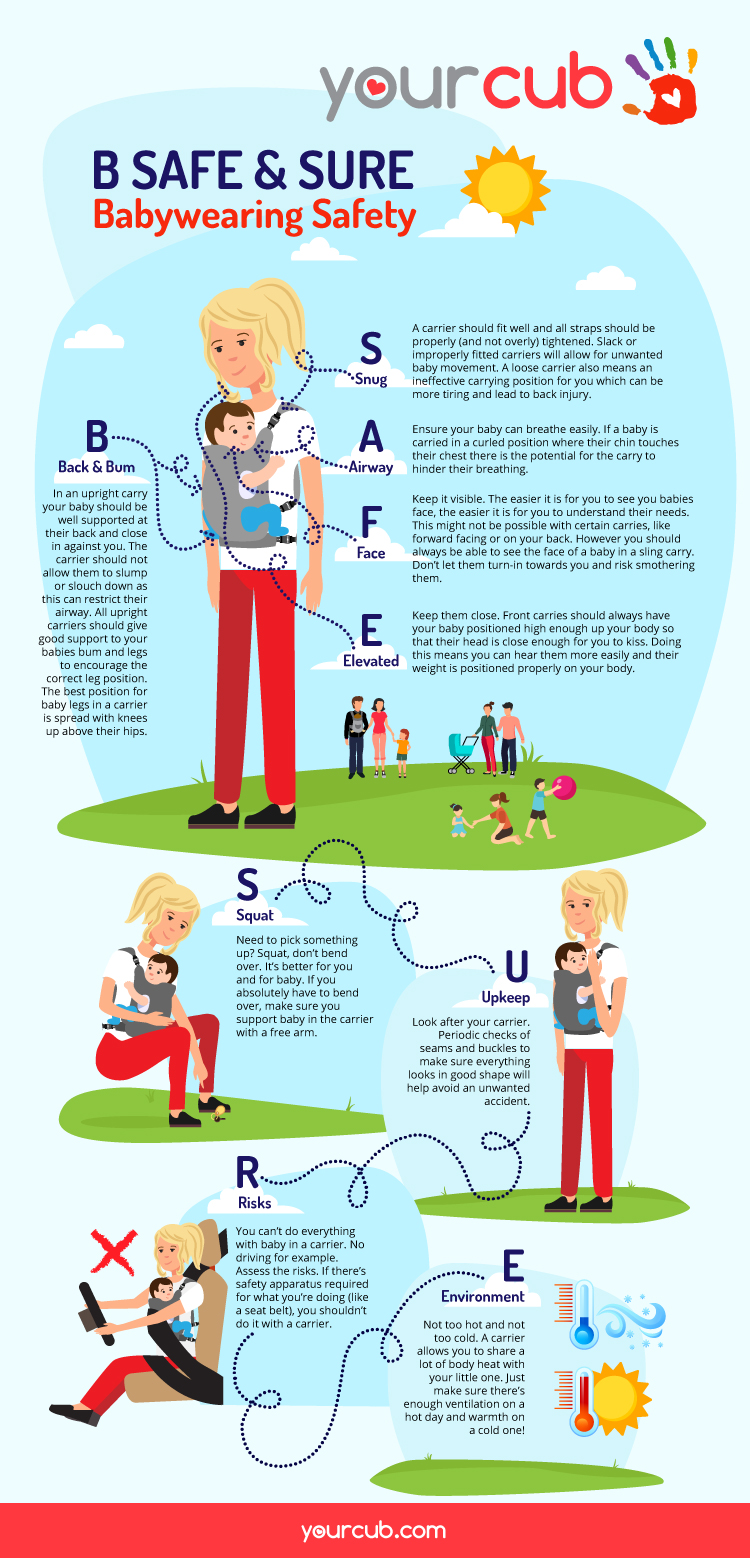Baby Carrier Safety - The B-SAFE Guidelines
One of my favorite things to do with both my children, is carry them! Seeing the world with them in your arms really gives you a sense of closeness. Any kind of shoulder or arm injury though and you can’t do it for long. It also makes doing anything useful tough. So in steps the baby carrier. There are loads of types of these, from wraps to backpacks, and they’re great. Everyone should have one.
There are some major benefits to using a carrier with your children. Here’s a few.
Being someone who likes to keep fit, taking a walk with your little ones in a carrier is like getting a mini workout. You can also get access to places you’d not be able to go with a stroller - hiking anyone?
Hands-free time - get some chores done, make a call, get the groceries….
Did you know carrying promotes better social and cognitive development for the baby? - they hear what you hear, see what you see and how you respond to it. This is a surefire way to increase infant development.
Whether you’re looking for your first carrier, or you’ve done it before. It’s sensible to acquaint yourself with good babywearing practices. Good practices work across ALL carrier types, from slings to wraps to soft structured carriers.
With that in mind, take a look at our B-SAFE and SURE guidelines (yourcub.com).

Source:yourcub.com
B for Back and Bum. In an upright carry your baby should be well supported at their back and close in against you. The carrier should not allow them to slump or slouch down as this can restrict their airway.
All upright carriers should give good support to your babies bum and legs to encourage the correct leg position. The best position for baby legs in a carrier is spread with knees up above their hips.
S for Snug. A carrier should fit well and all straps should be properly (and not overly) tightened. Slack or improperly fitted carriers will allow for unwanted baby movement. A loose carrier also means an ineffective carrying position for you which can be more tiring and lead to back injury.
A for Airway. Ensure your baby can breathe easily. If a baby is carried in a curled position where their chin touches their chest there is the potential for the carry to hinder their breathing.
F for Face. Keep it visible. The easier it is for you to see you babies face, the easier it is for you to understand their needs.
This might not be possible with certain carries, like forward facing or on your back. However you should always be able to see the face of a baby in a sling carry. Don’t let them turn-in towards you and risk smothering them.
E for Elevated. Keep them close. Front carries should always have your baby positioned high enough up your body so that their head is close enough for you to kiss. Doing this means you can hear them more easily and their weight is positioned properly on your body.
&
S for Squat. Need to pick something up? Squat, don’t bend over. It’s better for you and for baby. If you absolutely have to bend over, make sure you support baby in the carrier with a free arm.
U for Upkeep. Look after your carrier. Periodic checks of seams and buckles to make sure everything looks in good shape will help avoid an unwanted accident.
R for Risks. You can’t do everything with baby in a carrier. No driving for example. Assess the risks. If there’s safety apparatus required for what you’re doing (like a seat belt), you shouldn’t do it with a carrier.
E for Environment. Not too hot and not too cold. A carrier allows you to share a lot of body heat with your little one. Just make sure there’s enough ventilation on a hot day and warmth on a cold one!

